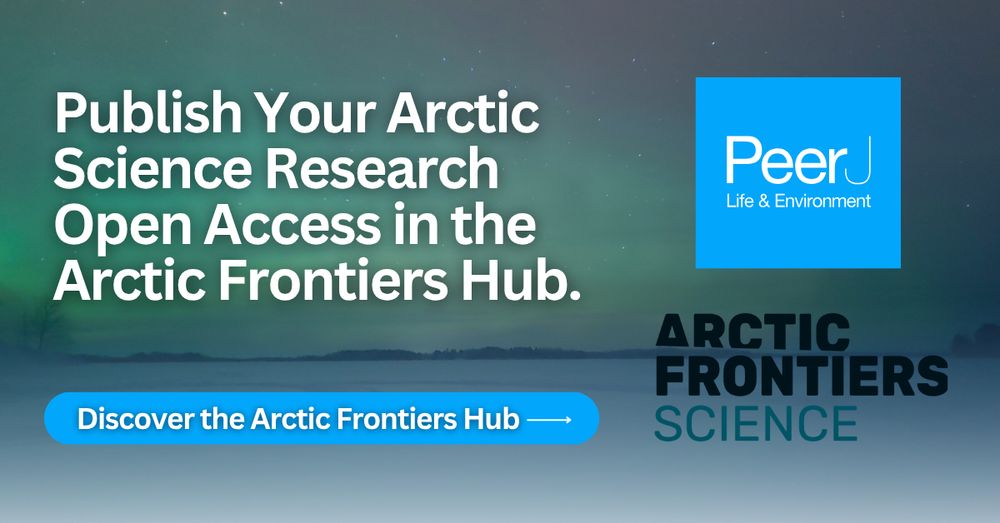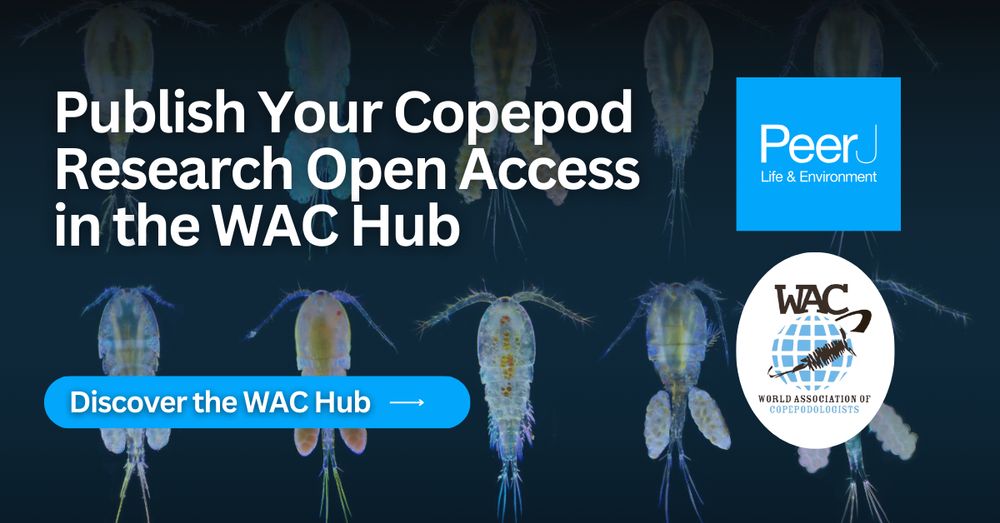
PeerJ Chemistry (our 5 chemistry journals).

peerj.com/articles/202...
peerj.com/articles/202...
I’m happy to announce our new paper on land use change and #BrownBear habitat connectivity in the Polish Carpathians recently published in #PeerJ! 📚
@peerj.bsky.social ⬇️
@jagiellonskiuni.bsky.social
➡️https://peerj.com/articles/20295/
#UJ #Carpathians #Science #Research
I’m happy to announce our new paper on land use change and #BrownBear habitat connectivity in the Polish Carpathians recently published in #PeerJ! 📚
@peerj.bsky.social ⬇️
@jagiellonskiuni.bsky.social
➡️https://peerj.com/articles/20295/
#UJ #Carpathians #Science #Research
peerj.com/articles/203...
@peerj.bsky.social


peerj.com/articles/203...
@peerj.bsky.social
@donyaniyaz.bsky.social
@lucalivraghi.bsky.social
High efficient, glowing eye and silk gland markers
peerj.com/articles/202...
@peerj.bsky.social
@donyaniyaz.bsky.social
@lucalivraghi.bsky.social
High efficient, glowing eye and silk gland markers
peerj.com/articles/202...
@peerj.bsky.social
Learn more about their research on the PeerJ blog peerj.com/blog/post/11...


Learn more about their research on the PeerJ blog peerj.com/blog/post/11...
Effectiveness of seed dispersal by foxes in areas with different human disturbances in southern Chile
peerj.com/articles/201...
@peerj.bsky.social
Effectiveness of seed dispersal by foxes in areas with different human disturbances in southern Chile
peerj.com/articles/201...
@peerj.bsky.social

peerj.com/articles/202...
@peerj.bsky.social
peerj.com/articles/202...
@peerj.bsky.social
peerj.com/articles/201...
#ComputedTomography #DigitalRepositories #Anthropology #Paleontology #Bioinformatics @peerj.bsky.social
peerj.com/articles/201...
#ComputedTomography #DigitalRepositories #Anthropology #Paleontology #Bioinformatics @peerj.bsky.social
💩🧬🧪Our Methods article about how preservation methods impact on genotyping success of feces is now published in @peerj.bsky.social peerj.com/articles/20154 #Biodiversity #ConservationBiology #Ecology #Genetics #Genomics #wolfConsevol
@consevol.bsky.social @ebdonana.bsky.social
🧵👇
💩🧬🧪Our Methods article about how preservation methods impact on genotyping success of feces is now published in @peerj.bsky.social peerj.com/articles/20154 #Biodiversity #ConservationBiology #Ecology #Genetics #Genomics #wolfConsevol
@consevol.bsky.social @ebdonana.bsky.social
🧵👇
We show that the invert taxa of the very understudied salares of the Lithium Triangle differ greatly between sites and will need assessing individually
peerj.com/articles/20042
We show that the invert taxa of the very understudied salares of the Lithium Triangle differ greatly between sites and will need assessing individually
peerj.com/articles/20042
Aquatic sloths (Thalassocnus) from the Miocene of Chile and the evolution of marine mammal herbivory in the Pacific Ocean @peerj.bsky.social peerj.com/articles/198...
Aquatic sloths (Thalassocnus) from the Miocene of Chile and the evolution of marine mammal herbivory in the Pacific Ocean @peerj.bsky.social peerj.com/articles/198...
Explore the Hub: bit.ly/3GgNGd3

Explore the Hub: bit.ly/3GgNGd3
Find out more: bit.ly/4eAjaHw

Find out more: bit.ly/4eAjaHw
peerj.com/articles/199...
@peerj.bsky.social #Annelida

peerj.com/articles/199...
@peerj.bsky.social #Annelida
Artwork by @alexboersma-art.bsky.social
1/6
#FossilFriday
peerj.com/articles/198...

Artwork by @alexboersma-art.bsky.social
1/6
#FossilFriday
peerj.com/articles/198...
#datascience #biodiversity #biology #science
#datascience #biodiversity #biology #science

Mauritian snail shells show evidence of extinct predators
peerj.com/articles/201...
@peerj.bsky.social

Mauritian snail shells show evidence of extinct predators
peerj.com/articles/201...
@peerj.bsky.social
Explore the Hub: bit.ly/4eAjDcK

Explore the Hub: bit.ly/4eAjDcK
Revisiting Drymaeus germaini (Ancey, 1892) (Gastropoda, Bulimulidae): ecological niche and first anatomical description of a poorly known land snail species from Brazil 🇧🇷
#CiteTheDOI: ❌
https://doi.org/10.7717/peerj.19641
Revisiting Drymaeus germaini (Ancey, 1892) (Gastropoda, Bulimulidae): ecological niche and first anatomical description of a poorly known land snail species from Brazil 🇧🇷
#CiteTheDOI: ❌
https://doi.org/10.7717/peerj.19641
🔗 For more information about Sharks International 2026, and to register or submit your abstract, visit si2026.org
#SI2026 #SharksInternational2026 #SriLanka #PeerJ #StudentAward



🔗 For more information about Sharks International 2026, and to register or submit your abstract, visit si2026.org
#SI2026 #SharksInternational2026 #SriLanka #PeerJ #StudentAward

